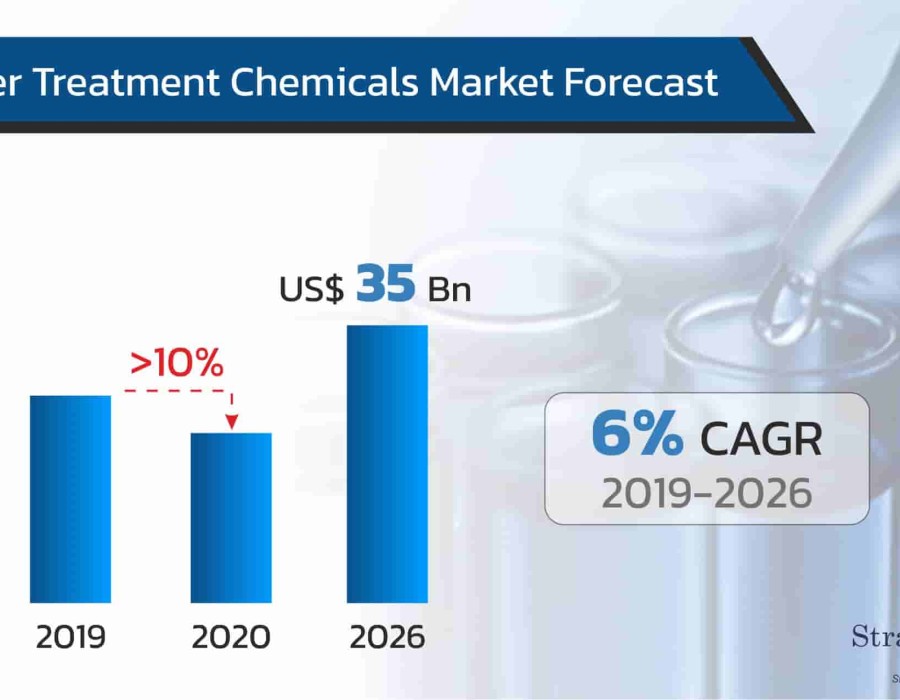Introduction:
The global water treatment chemicals market is undergoing a dynamic transformation driven by emerging trends in fluid dynamics. The market for water treatment chemicals is subjected to grow at a healthy CAGR of 6.0% over the next five years to reach US$ 35 billion by 2026. As the demand for clean and potable water rises worldwide, industries and municipalities are increasingly turning to advanced chemical solutions to address water quality challenges. This article explores the key trends shaping the fluid dynamics of the global water treatment chemicals market and their impact on sustainable water management.
Advanced Oxidation Processes (AOPs):
One of the prominent trends in fluid dynamics is the adoption of Advanced Oxidation Processes (AOPs). AOPs involve the generation of powerful oxidizing agents to break down and eliminate contaminants in water. These processes, such as ozone and ultraviolet (UV) treatment, are gaining traction for their effectiveness in removing persistent organic pollutants, pharmaceuticals, and microorganisms, thereby enhancing water quality.
Smart Water Treatment:
The integration of smart technologies into water treatment processes is revolutionizing fluid dynamics. Smart water treatment systems leverage real-time data and analytics to optimize chemical dosing, monitor water quality, and predict potential issues. This trend enhances efficiency, reduces operational costs, and allows for proactive management of water treatment plants.
Green Chemistry:
The global push towards sustainability has influenced the water treatment chemicals market, promoting the development of eco-friendly solutions. Green chemistry principles, emphasizing the use of non-toxic and environmentally benign chemicals, are gaining prominence. Manufacturers are investing in research and development to create water treatment chemicals that minimize environmental impact while maintaining high efficacy.
Nanotechnology in Water Treatment:
Nanotechnology is making waves in the water treatment sector by introducing innovative solutions to address complex challenges. Nanomaterials, such as nanoparticles and nanocomposites, are being utilized for their enhanced adsorption capabilities and catalytic activities. These materials improve the removal of contaminants, providing a more efficient and compact water treatment process.
Antiscalants and Scale Inhibitors:
As industries and municipalities seek to prolong the life of their water infrastructure, the use of antiscalants and scale inhibitors is on the rise. These chemicals prevent the formation of scale deposits in pipelines and equipment, ensuring the smooth operation of water treatment systems. The application of these chemicals minimizes maintenance costs and enhances the overall efficiency of water treatment processes.
Membrane Technologies:
Membrane technologies, including reverse osmosis and nanofiltration, play a crucial role in fluid dynamics by separating impurities from water at the molecular level. The water treatment chemicals market is witnessing increased demand for chemicals that optimize membrane performance, improve fouling resistance, and extend membrane lifespan, contributing to more sustainable water treatment practices.
Conclusion:
The fluid dynamics of the global water treatment chemicals market are evolving in response to growing environmental concerns, technological advancements, and the increasing demand for clean water. As industries and communities strive to meet water quality standards, the adoption of emerging trends such as AOPs, smart water treatment, green chemistry, nanotechnology, antiscalants, and membrane technologies is shaping a more efficient and sustainable future for water management worldwide. The convergence of these trends reflects a commitment to safeguarding water resources for future generations.





Comments